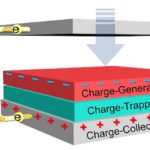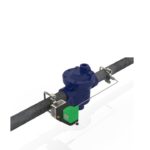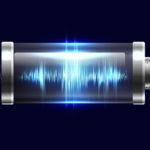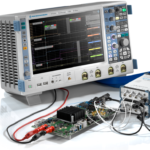In this second part of EEWorld’s virtual round table on testing power consumption and batteries for wireless IoT nodes and wearables, our panelists delve into the nuances of complementary cumulative distribution function (CCDF) testing and predicting actual battery performance. Our panelists include: Janet Ooi (JO), IoT Industry Solutions Lead at Keysight Technologies, Shah Hassan (SH), Business Manager at Tektronix, and Dr. Markus Herdin (MH), Market Segment Manager – Industry, Components and Research with Rohde & Schwarz.

JS: What is the most misunderstood aspect of complementary cumulative distribution function (CCDF) analysis?
SH: The most misunderstood aspect of CCDF is when to use and why. The CCDF helps the designer analyze the current drain measurement over a long battery operating life period. The CCDF provides statistical analysis to visualize the current flow in your devices.
JO: Many CCDF charts show how the device spends its time at or above various current levels, but it might not be as relevant as how it expends the charge. For example, if you look at a time-based CCDF, a long, steep drop in the percentage time graph around 100 µA (marked “1” below) is dramatic in appearance. Still, it is negligible in charge consumption significance to a much smaller drop at 4 mA in the percentage charge line (marked “2” below). For this reason, a CCDF chart should show both percentages of charge and time for comprehensive, in-depth insight into how much time a device spends at a certain current level.

JS: What challenges do designers face when performing a CCDF analysis of battery drain in these applications?

JO: There are several challenges that designers will face when performing a CCDF analysis. For example, designers need to capture data over an extended period to ensure it is a good representation of the actual device performance. On top of that, they will need to ensure that the data captured is accurate.
Getting the right software to analyze the resulting time-domain measurements and automatically display both percentages of time and charge is critical to interpreting the CCDF curve results. However, determining which events within the device are associated with different current levels is also important and often requires event-based power analysis.
SH: CCDF could be time-consuming to perform, and often time designers must rely on a costly software package to perform it.
JS: What considerations are most important when testing battery life to substantiate expectancy claims to customers?
SH: Accurately capturing a wide dynamic range of current, over 8 decades, is important. Capturing complex and fast transient mode current waveforms over time is also a priority and ensures stable, clean, and accurate power to the device-under-test.
JO: Designers need to understand how the IoT device interacts with peripheral devices in the real world. When wireless technologies share similar frequency bands, co-channel and adjacent channel interference can result in dropped network connections and failed transmissions. In response, the IoT device continually attempts to reconnect to the network or retransmit data, excessively draining a device’s battery. The best way to avoid this situation is to consider how the IoT device will interact with other devices and design for sharing spectrum to prevent collisions and repeat transmissions.

JS: What instrument(s) are available to serve as a “battery simulator” that can provide high repeatability to estimate battery life in wireless IoT nodes and wearables effectively?
JO: Keysight’s N6705C DC power analyzer combined with source/measure units (SMUs) enables fast and accurate power consumption analysis. This solution will accurately emulate a battery, providing stable, glitch-free sourcing, and sinking (charge / e-load). The N6705C DC power analyzer measures and characterizes IoT devices at different operating states (off, sleep, standby, and transmit mode) with its patented seamless measurement ranging technology. The N6705C DC power analyzer can behave like an oscilloscope, so the designer has a familiar operating model to explore circuit behavior rapidly. It can also act as a data logger to record long-term circuit power consumption. When used together with Keysight’s PathWave BenchVue software, or event-based power analysis software, it provides further insights into the measurement, enabling designers to analyze IoT device power consumption easily.
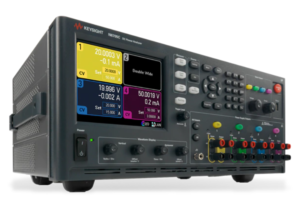
MH: An effective tool to simulate batteries and estimate battery life is a programmable power supply like the R&S NGM200, designed to simulate realistic power conditions. An R&S®NGM200 can emulate the state-of-charge and the equivalent series resistance of batteries; both are essential for accurate simulation of a battery. At the same time, a high-speed acquisition functional called FastLog provides a sampling rate of up to 500kSa/s to accurately capture the current consumption throughout all the activity phases of an IoT device. Only with a high logging rate is it possible also to capture very brief activity phases resulting in brief current consumption pulses. In addition, R&S provides a simple but effective tool to analyze the logging data on a PC.
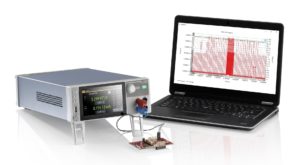
SH: The most direct recommendation from Tektronix is the Series 2281S-20-6 Dynamic Battery Simulator that uses a model to emulate the response of a battery over its discharge cycle. This supply can be used in “battery test” mode first to create a model of the battery the user is looking to emulate, then use this same model as an active battery in “battery simulator” mode. It boasts a fast 0.002 PLC measurement capability and 6.5-digit resolution.
Alternatively, Tektronix has Source Measure Unit options that use the powerful, Keithley-proprietary Test Script Processing (TSP) technology to drive the interactive touchscreen models 2450, 2460, and 2461 to operate as battery simulators. For more power and speed, the Series 2651A is also an option.
JS: Thank you to our three Virtual Roundtable participants for sharing their insights and experience! You might also be interested in reading, Testing power consumption and batteries for wireless IoT nodes and wearables – Virtual Roundtable (part 1 of 2).


